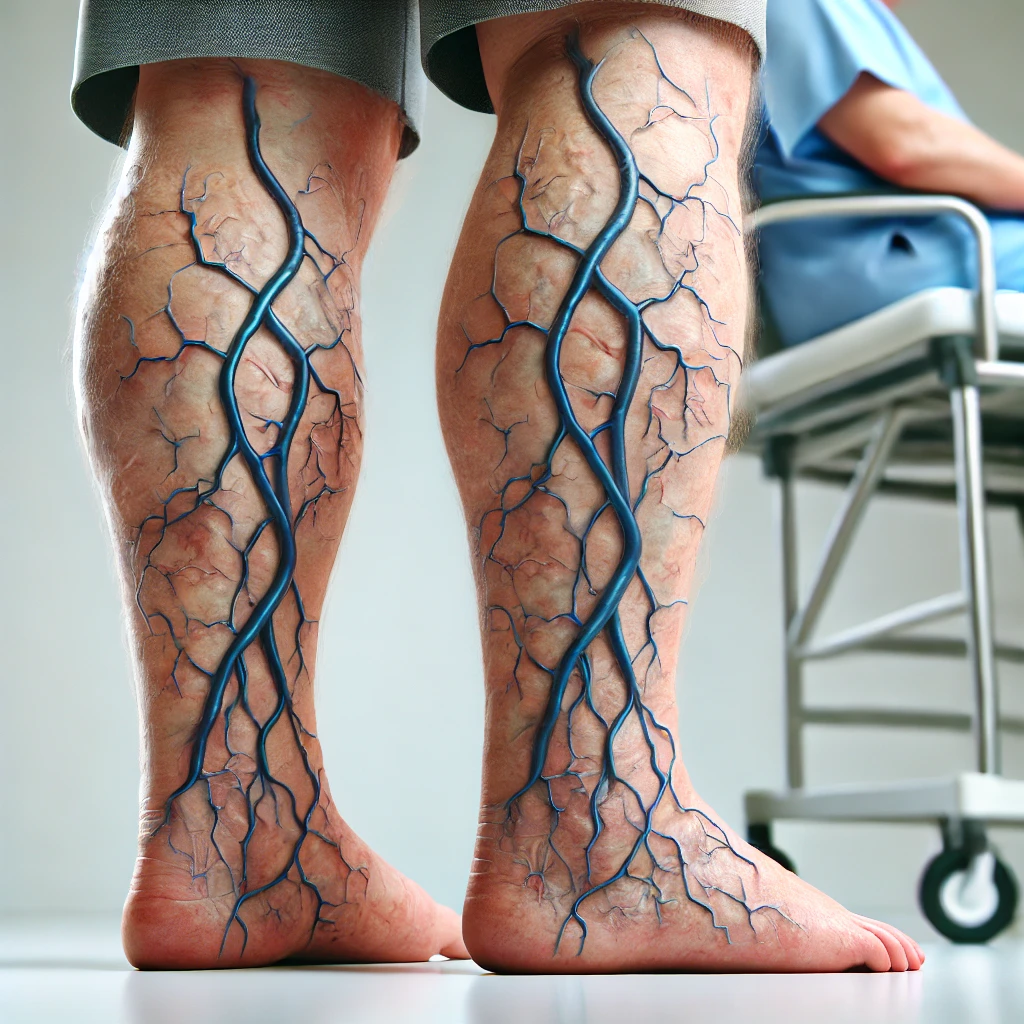Why Are My Legs Swollen? The Hidden Link to Vein Problems

Why Are My Legs Swollen? The Hidden Link to Vein Problems
Do your legs feel heavy, achy, or swollen—especially by the end of the day? You’re not alone. Leg swelling is one of the most common complaints in adults, and while it’s often dismissed as fluid retention or “just aging,” it may actually signal a more serious and treatable condition: venous insufficiency.
When your veins aren’t working properly, blood and fluid start to pool in your lower legs, leading to swelling, fatigue, discomfort, and even visible vein changes. Left untreated, this condition can progress to skin damage, varicose veins, and ulcers.
In this article, we’ll explain how vein problems cause swelling, who’s at risk, and what treatments can restore healthy circulation and get you back on your feet—comfortably.
What Is Venous Insufficiency?
Your veins are responsible for returning blood from your legs back to your heart. They rely on one-way valves that open to allow blood flow upward and close to prevent backflow.
In chronic venous insufficiency (CVI), these valves become weakened or damaged, causing blood to flow backward (reflux) and pool in the lower legs. This leads to increased pressure in the veins and fluid leaking into surrounding tissues—resulting in swelling (edema).
Signs Your Leg Swelling May Be Due to a Vein Problem
- Swelling that worsens as the day goes on and improves with elevation
- Heaviness or aching in the legs, especially after standing
- Varicose veins or spider veins
- Skin discoloration, thickening, or itching near the ankles
- Restless legs or nighttime cramping
- History of pregnancy, prolonged standing, or family history of vein issues
Many people experience swelling before visible veins appear, which is why early evaluation is crucial.
Causes and Risk Factors
Several factors increase the risk of developing vein-related leg swelling:
- Genetics: Family history of varicose veins or CVI
- Age: Valve function declines with age
- Prolonged standing or sitting: Common in jobs like teaching, nursing, or driving
- Obesity: Extra weight increases pressure on leg veins
- Pregnancy: Hormones and increased blood volume strain the veins
- History of blood clots (DVT): Can damage vein valves
- Sedentary lifestyle: Reduces circulation in the lower limbs
How Chronic Venous Insufficiency Progresses
Venous insufficiency typically worsens over time if not treated. The CEAP classification is often used to describe severity:
- C0–C1: No visible veins or just spider veins
- C2: Varicose veins
- C3: Swelling (edema)
- C4: Skin changes like thickening, hyperpigmentation
- C5–C6: Healed or active venous ulcers
Once leg swelling begins, it indicates stage C3 or higher, meaning your condition is progressing and should be evaluated by a vein specialist.
Why Swelling Happens
Vein-related swelling is due to:
- Increased venous pressure from blood pooling
- Capillary leakage, where fluid leaks from blood vessels into tissues
- Lymphatic congestion, since overloaded veins can impair lymph flow
- Inflammation, which can damage skin and underlying tissue over time
This is why chronic leg swelling can lead to skin hardening, dark patches, or even open sores—especially around the ankles.
How to Treat Vein-Related Leg Swelling
The good news? Venous insufficiency is treatable, and early intervention can stop progression and improve quality of life.
1. Vein Ultrasound (Venous Doppler Study)
This diagnostic test maps the veins in your legs and shows where valves are failing. It’s non-invasive, painless, and essential for diagnosis.
2. Compression Therapy
Graduated compression socks help push fluid back toward the heart, relieving swelling and preventing symptoms from worsening.
3. Lifestyle Changes
- Elevate legs when resting
- Stay active (walking improves venous return)
- Avoid prolonged standing or sitting
- Maintain a healthy weight
4. Minimally Invasive Vein Treatments
At Sheen Vein and Cosmetics, we offer leading-edge, outpatient treatments including:
- Endovenous laser ablation (EVLA)
- Ultrasound-guided Foam sclerotherapy
- Visually-guided Sclerotherapy
These procedures close off refluxing veins, restoring proper blood flow and relieving swelling and pressure—with no downtime.
What Happens if You Ignore It?
Untreated vein disease can lead to:
- Worsening swelling
- Pain and leg fatigue
- Skin ulcers or non-healing wounds
- Blood clots (superficial thrombophlebitis or DVT)
Ignoring leg swelling can increase your risk of serious complications, especially as the pressure builds in your vascular system.
Final Thoughts
If your legs are swollen at the end of the day, don’t brush it off—it could be an early warning sign of chronic venous insufficiency. Addressing the root cause with proper diagnosis and modern vein treatments can dramatically improve your circulation, reduce swelling, and prevent long-term damage.
Call to Action:
Ready to get to the root of your leg swelling? Schedule a vein consultation at Sheen Vein and Cosmetics. Our non-invasive testing and personalized treatment plans can restore comfort, improve circulation, and get you back to doing what you love—without heaviness, pain, or swelling.